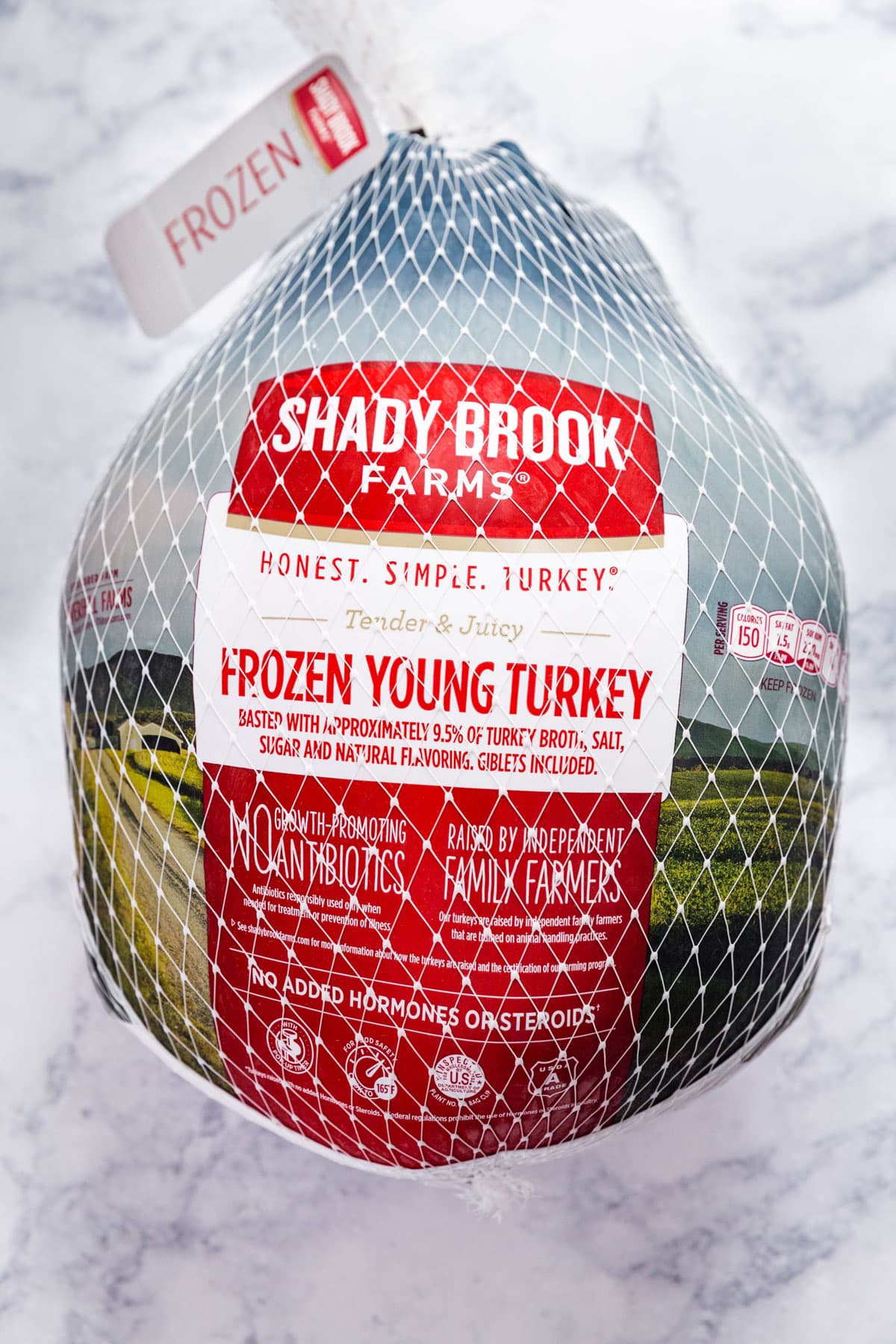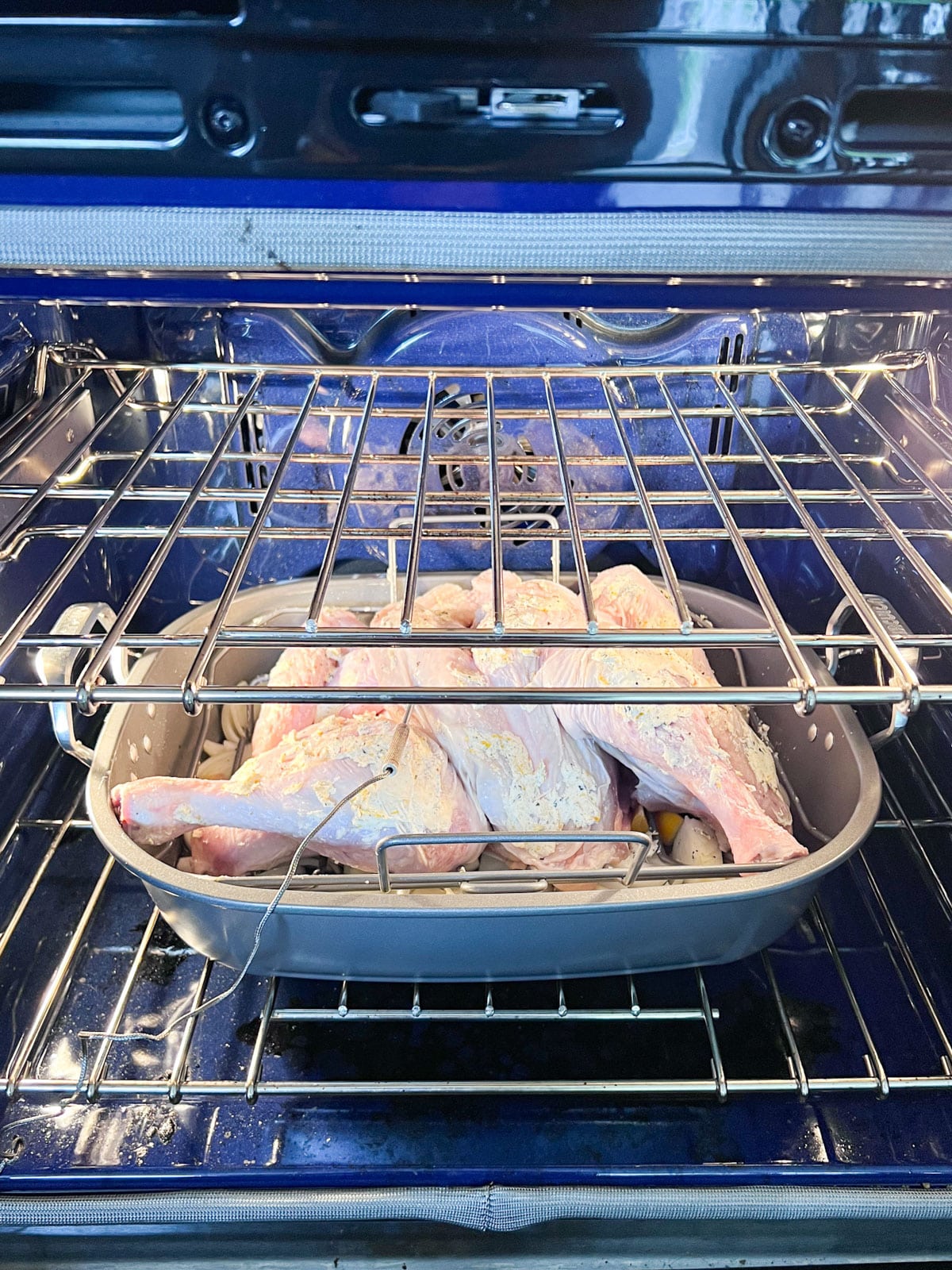Whole turkey with oranges and rosemary is seriously delicious. This turkey recipe is very simple, and the flavors work together perfectly, making a tasty, impressive turkey without any work on your part.
The aromatic bright taste of citrus is a fantastic way to infuse your Thanksgiving turkey with flavor. Using fresh oranges as an alternative to heavy, carb-loaded stuffing provides a lighter and more refreshing taste. The juicy oranges steam and season the turkey from the inside out. Follow these simple steps for turkey perfection with a fruity twist.
Benefits of Oranges Over Traditional Stuffing
Stuffing turkey with oranges offers many advantages over typical bread stuffing:
-
Fewer calories and fat – Oranges are low calorie and fat free unlike bread stuffing which soaks up butter.
-
Natural moisture – Orange juice keeps the turkey deliciously moist and tender
-
Fresh, bright flavor – Citrus provides a summery taste and aroma.
-
Texture contrast – Juicy oranges balance the turkey’s dense meat.
-
Nutrient boost – Oranges give you extra vitamin C and antioxidants
-
Ease – No tedious stuffing prep needed. Just slice oranges and stuff.
-
Lower cost – Inexpensive oranges eliminate pricier stuffing ingredients.
Step-by-Step Guide to Stuffing with Oranges
Stuffing turkey with fresh oranges is simple. Just follow these steps:
1. Prep the Oranges
-
Wash and dry 3-4 large oranges. Navel oranges work great.
-
Slice off both ends of the oranges so they have flat surfaces.
-
Slice the oranges into 1/2-inch rounds.
2. Prep the Turkey
-
Remove giblets and neck from the cavity. Rinse cavity well.
-
Pat the turkey dry thoroughly inside and out with paper towels.
3. Stuff the Bird
-
Place orange slices evenly into cavity, piling in layers.
-
Stuff some sprigs of fresh rosemary and sage around the oranges.
-
Tie drumsticks together with string to seal in juices.
4. Roast the Turkey
-
Roast turkey at 400°F until internal temperature reaches 165°F.
-
Baste occasionally with pan juices for moistness.
-
Allow to rest 30 minutes before carving.
5. Finish and Serve
-
Discard oranges and herbs before carving turkey.
-
Make gravy from the flavorful pan drippings.
-
Garnish platter with leftover orange slices.
Cooking Tips for Best Results
Utilize these tips for optimizing flavor and moisture when stuffing turkey with oranges:
-
Choose juicy, sweet oranges – Navel, Cara Cara, or blood oranges work well.
-
Stud with garlic and herbs – For extra flavor, poke slivers of garlic and rosemary sprigs into oranges.
-
Include lemon and lime – Mixing in some lemon and lime citrus provides tangy contrast.
-
Layer generously – Pack the cavity full of orange slices to release maximum juice.
-
Truss tightly – Tie legs and wings in place so steam is trapped inside.
-
Baste frequently – Baste every 30 minutes using pan juices to prevent drying out.
-
Cook to 165°F – Use a meat thermometer to ensure the turkey reaches a safe final temperature.
-
Let rest before carving – Waiting 30 minutes allows juices to reabsorb for moister meat.
Handling Leftovers
Be sure to safely store leftover stuffed turkey:
-
Refrigerate turkey leftovers within 2 hours of cooking.
-
Store meat in shallow containers to allow rapid cooling.
-
Use leftovers within 3-4 days for maximum freshness and quality.
-
Slice breast meat for sandwiches. Shred leg meat for casseroles or soups.
-
Make turkey stock from the bones to use in sauces or gravy.
Creative Serving Suggestions
Here are some fun ways to serve your masterpiece turkey:
-
Offer guests thin slices of turkey layered on small toasted bread rounds.
-
Pile shredded turkey, orange segments, and spinach atop dinner salads.
-
Dice turkey and mix with mayo, orange segments, and almonds for a sandwich filling.
-
Sauté bite-size turkey pieces and orange segments in a teriyaki glaze for an appetizer.
-
Fold leftover turkey pieces into warmed flour tortillas with guacamole and shredded lettuce.
Avoid Stuffing Pitfalls
When stuffing turkey with oranges, sidestep these potential issues:
-
Dry turkey – Be diligent about basting to prevent drying out, especially the breast meat.
-
Bland citrus flavor – Use flavorful, in-season oranges at their peak ripeness.
-
Soggy skin – Ensure skin is thoroughly dried before roasting to maintain crispy skin.
-
Undercooked meat – Use a meat thermometer to verify the turkey reaches a safe 165°F.
-
Tough, stringy texture – Allow the cooked turkey to rest before slicing to set juices.
The Takeaway
Stuffing turkey with fresh oranges elevates your holiday centerpiece with bright, lively citrus flavor. Oranges impart natural moisture and a lighter, more nutritious alternative to heavy bread stuffing. With minimal effort, you can treat your guests to tender, juicy turkey infused with sweet, tangy orange essence. This simple trick delivers incredibly succulent results sure to become your new Thanksgiving tradition.

Ingredient Information and Substitutions
- Whole Turkey—To be honest, I like a bird that has been spatchcocked better. I wrote a whole post about why and how to spatchcock a turkey, but the main reason is that it makes the bird cook faster and more evenly, which makes it more juicy. Also, you can ask your butcher to do it for you. That post will show you how to do it. You can change this recipe to fit a fifteen-pound turkey, even though I wrote it for a fifteen-pound turkey. I.
- Brine: If you want to roast the whole bird without butterflying it, you can put it in a brine of water, Kosher salt, brown sugar, rosemary, orange peel, and bay leaf. This will make the bird more juicy and flavorful. If spatchcocking, this is not necessary.
- Compound Butter: A very tasty and flavorful turkey can be made with salted butter, Kosher salt, black pepper, garlic powder, onion powder, rosemary, and orange zest.
- Getting the Pan and Turkey Ready: I always put onions, garlic, rosemary, oranges, and some water in the pan to get it ready. I also season the bird with salt and pepper and then put onions, garlic oranges, and rosemary inside it. With these, you can make tasty drippings that you can mix with more turkey broth to make gravy thicker while the bird rests.


How To Slow Roast Turkey
When roasting a whole turkey, you should start at a higher heat to quickly render some of the fat out. Then, lower the heat and cook the turkey for the rest of the time. It usually takes about 20 minutes per pound to cook, but there are a lot of things that can change this. For the best turkey, cook by temperature, not by time.
Here’s how I cook my turkey:
- The first 20 minutes of cooking my bird are at 450 degrees, and then the heat is turned down to 350 degrees for the rest of the time.
- Put the thermometer into the thickest part of the thigh, close to where the thigh meets the breast, and push it into the meat of the thigh. Make sure you don’t touch any bones. If you have a second probe, you can put it in the other thigh as well. I also like to have a good instant read thermometer on hand just in case, but you don’t have to. However, you shouldn’t trust the pop-up thermometers that come with the turkey.
- The question of whether to baste or not to baste has good points and bad points. This is what I’ve done both ways, but neither way has really pulled me toward it. I didn’t baste my turkey, and as you can see, the skin is wonderfully crispy. After a long day, I didn’t want to lose heat from the oven and have to cook longer, so I didn’t baste. But you do you!.
- Check the turkey breast every so often to see if it’s getting too dark too fast. If it is, you can cover that part with foil to help keep it from burning.
- At 161 degrees, I think it’s time to take the turkey out of the oven. Even though chicken is safe to eat at 165 degrees, it will continue to cook while it rests and reach 165 degrees while still being tender and juicy.
- Rest your turkey for at least 30 minutes so the juices can spread out again before you carve it.

Orange Spiced Turkey | Your turkey for this year’s Thanksgiving!
FAQ
Are oranges good in turkey?
What’s the best thing to stuff a turkey with?
Why stuff a turkey with apples and oranges?
What can I put in the turkey for the best flavor?
